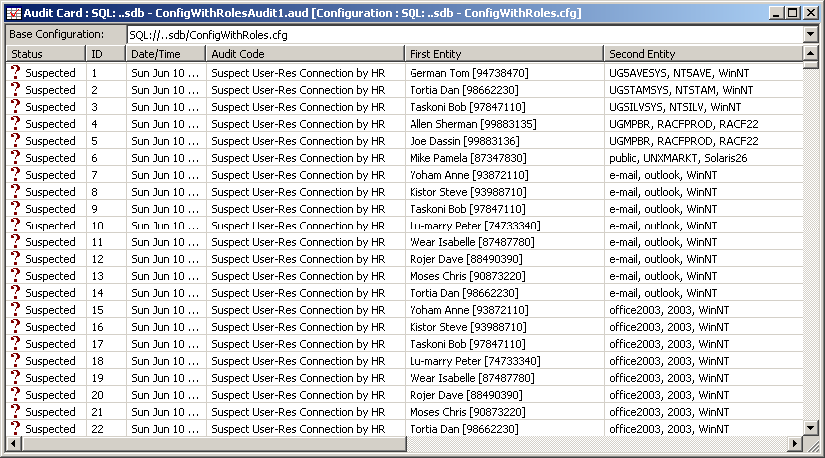

After parameters have been filled in, click Run! in the Audit Parameters window. A progress bar will be displayed during the generation process. If many parameters were selected, then generating the AuditCard may take a long time. In this circumstance, consider whether to perform the run during off-peak hours. For large and complex configurations, consider running the AuditCard option in separate parts. The run can be stopped at any time without losing work. The accumulated records will be displayed in a new AuditCard.
Each record in the audit card reflects a separate alert and all records contain a date/time stamp and their tracking status (new records are marked as suspected). An existing AuditCard can be re-run to check the status of alerts that have already been addressed. The AuditCard's description field can be used to annotate alerts with clarifications or explanations for reference purposes at a later date (for example, if the record needs to be re-checked in the future or if it was found to be OK even though it continues to be generated).
AuditCards are saved as special documents (.aud files) and enable subsequent tracking of alert status. It is also possible to add new alerts to existing alerts by activating the Open AuditCard radio button and performing a new run (Run!). The following window shows a typical AuditCard generated from an existing configuration.
Comments can be added in the Description field.

The fields are described in the following table:
|
Name |
Description |
|---|---|
|
Base Configuration |
Displays the Configuration file path and name on which the AuditCard is built. |
|
Status |
The AuditCard provides a list of “suspected” violations of internal logic as applied to the specific configuration. |
|
ID |
An incremented number showing the number of suspected records within the “suspected” list generated in the AuditCard. |
|
Date/Time |
Date and time that record was generated. |
|
Audit Code |
Lists a text description of the type of the suspicion detected. |
|
First Entity |
First entity involved in the alert. |
|
Second Entity |
Second entity involved in the alert. |
|
Third Entity |
Third entity involved in the alert. |
|
Score |
Not relevant for AuditCard. |
|
Description |
Comments can be inserted by the Role Engineer. |
|
Copyright © 2014 CA.
All rights reserved.
|
|